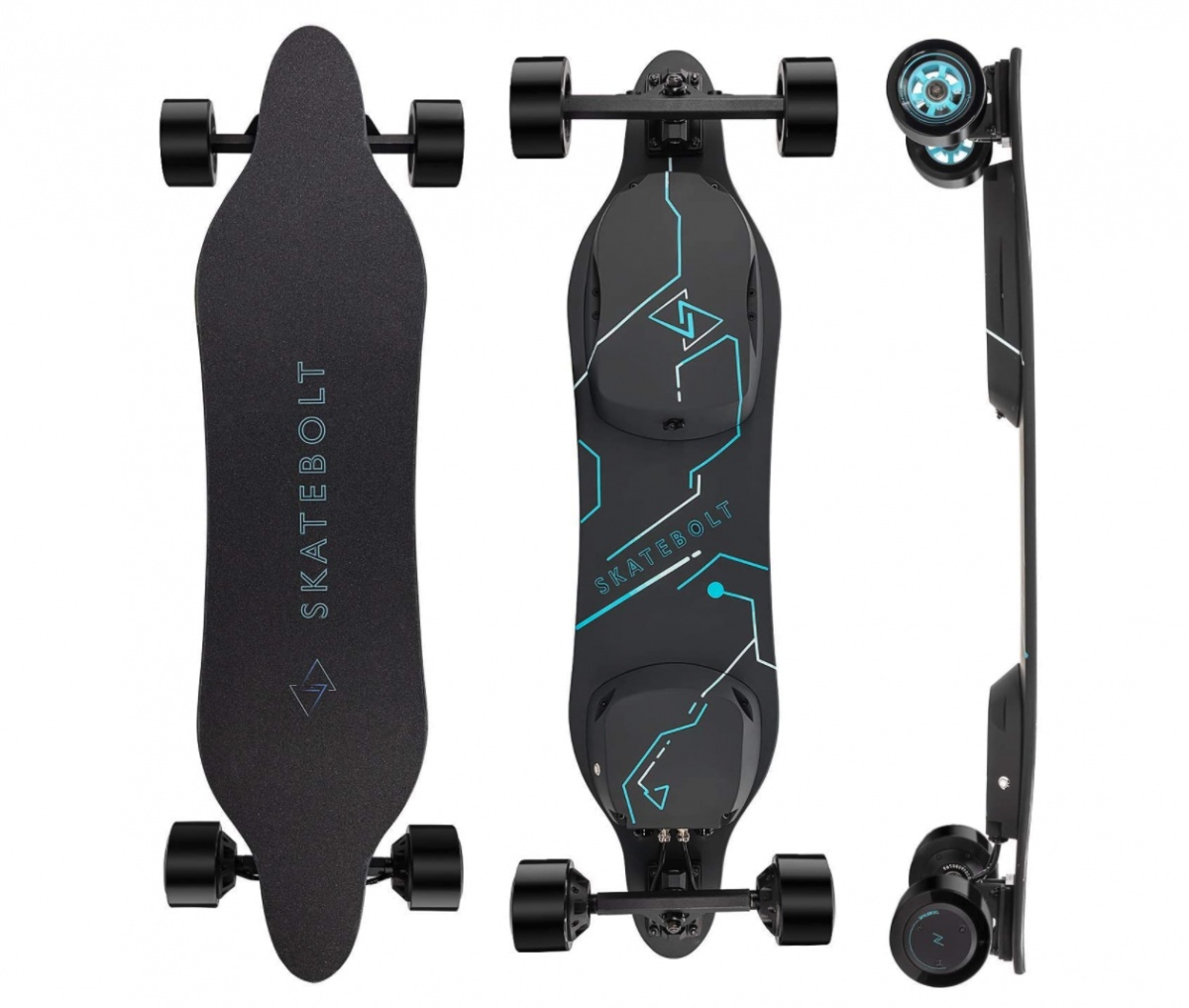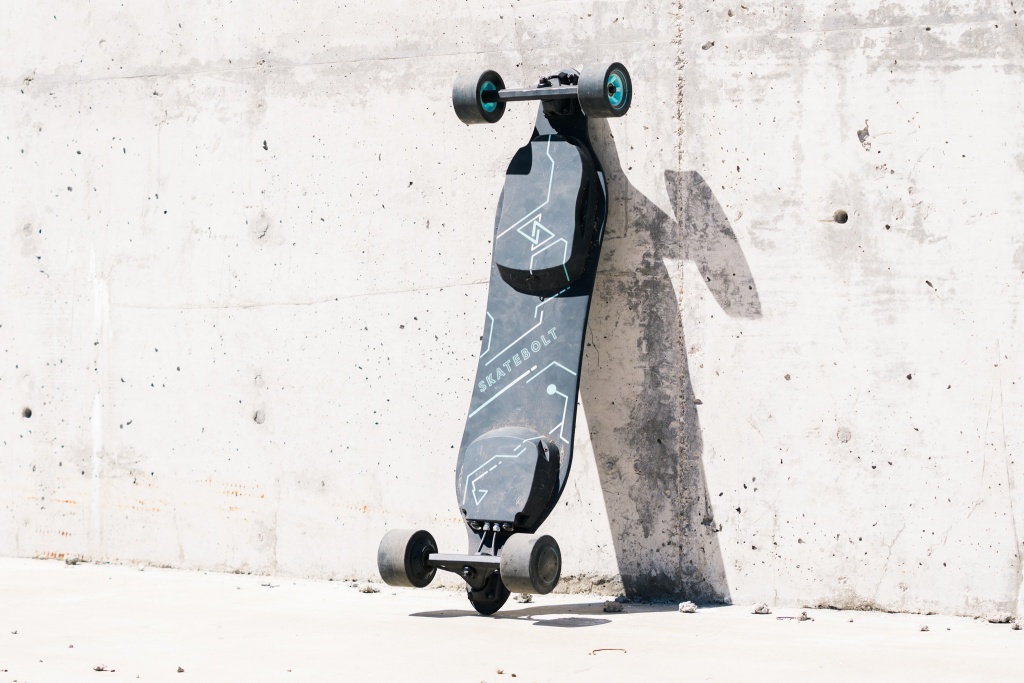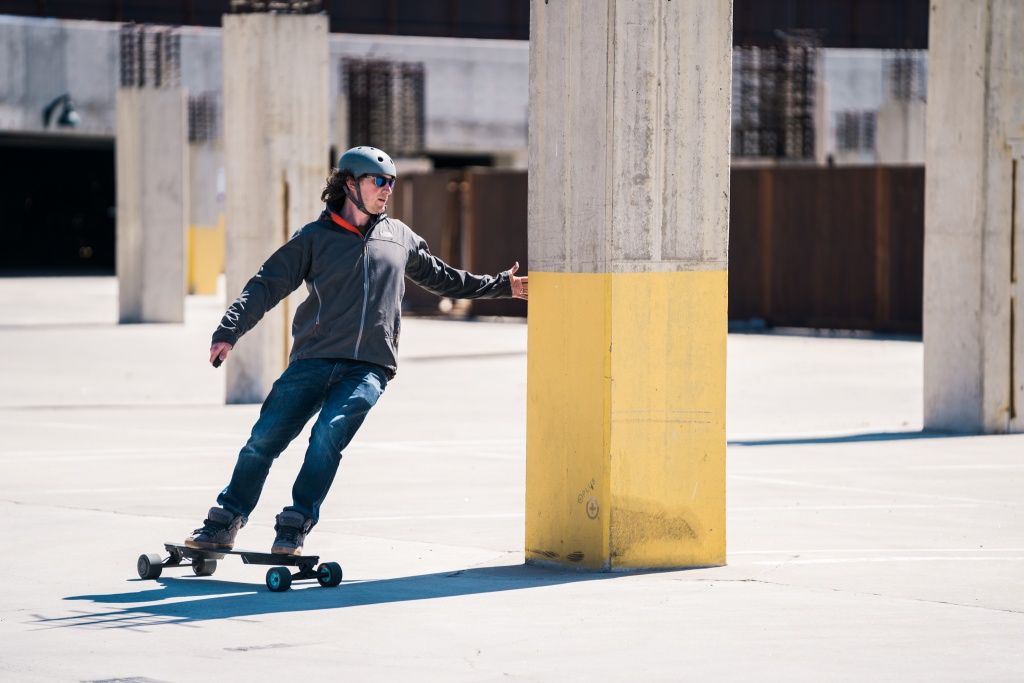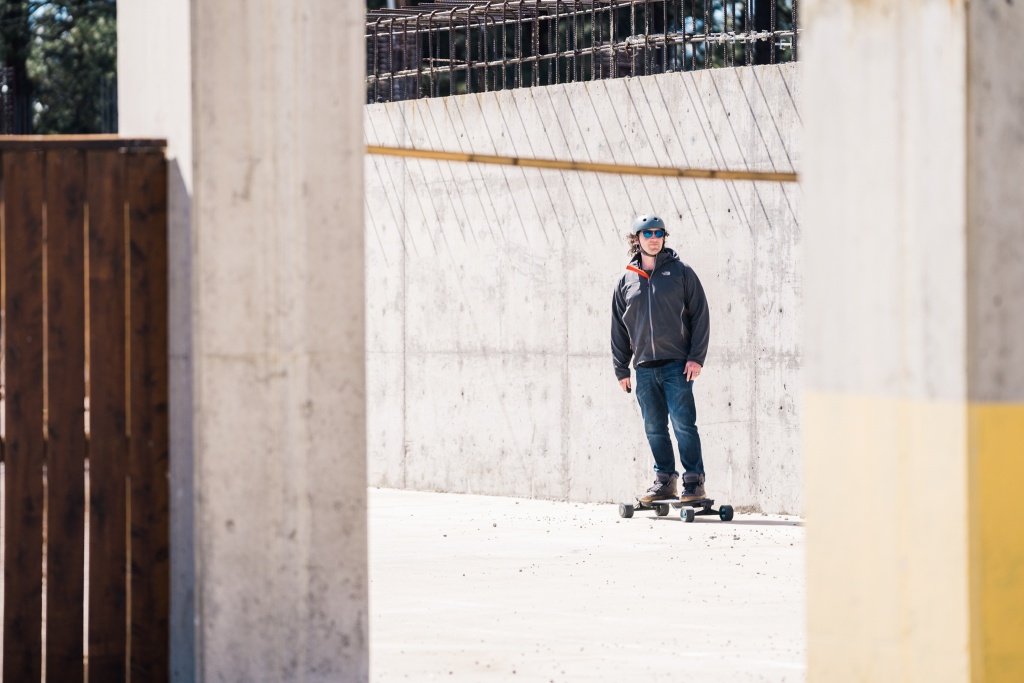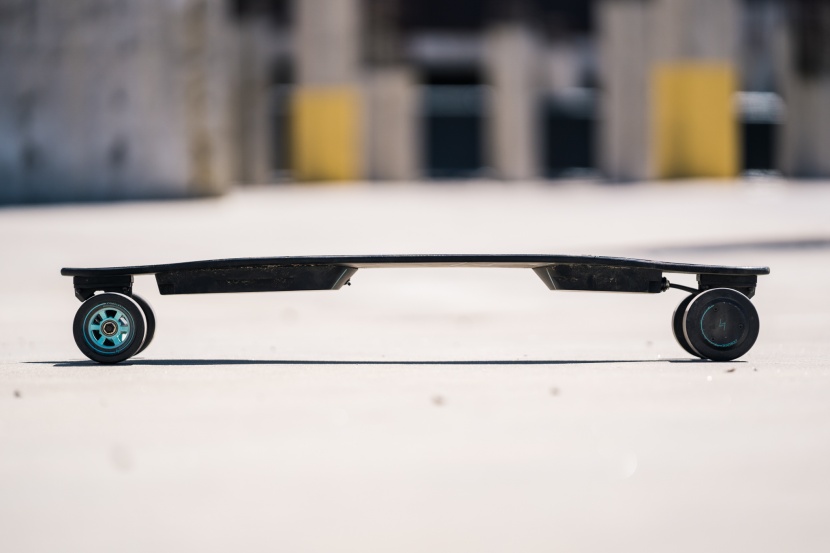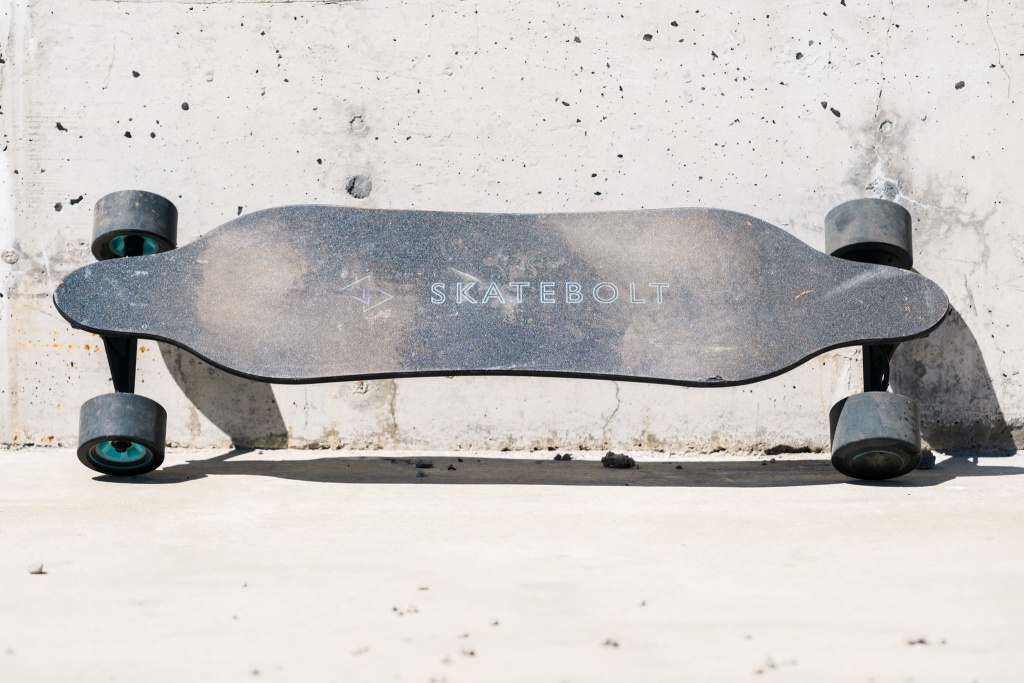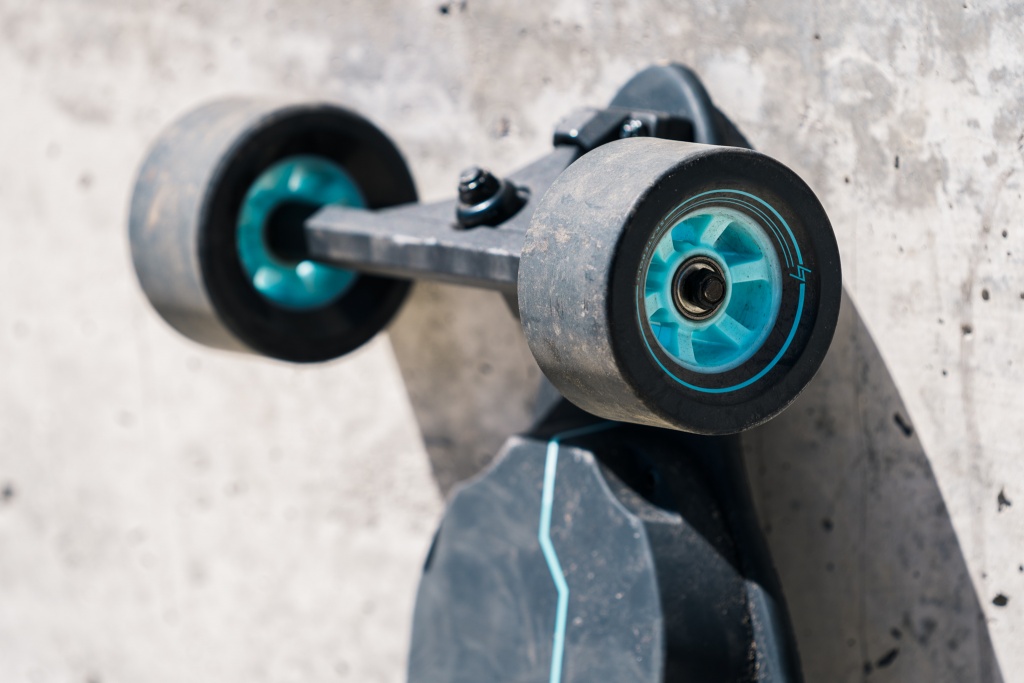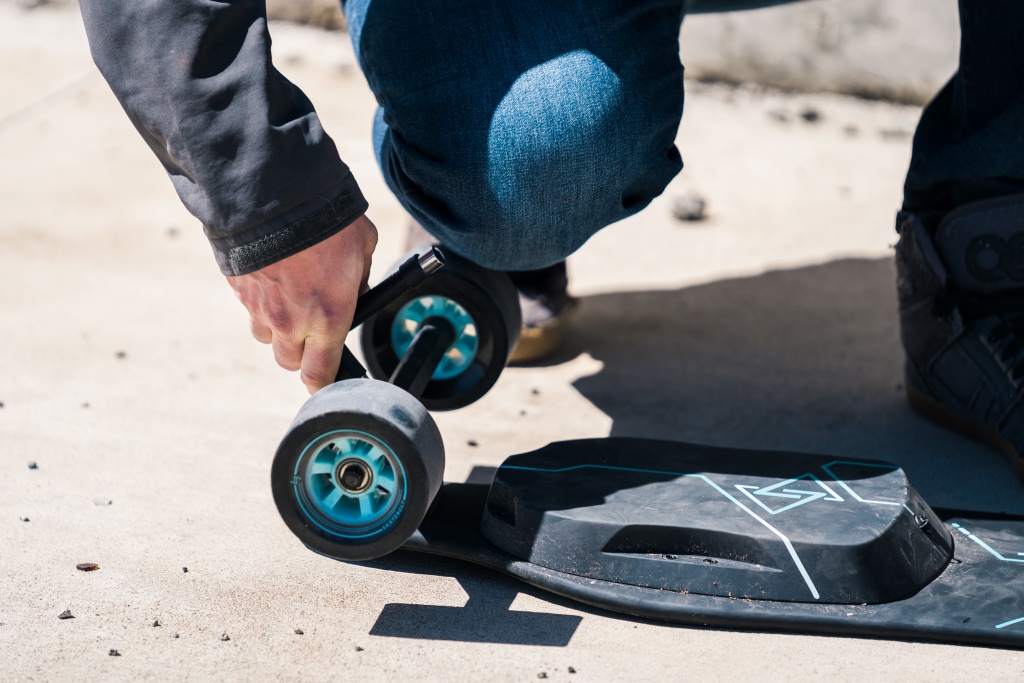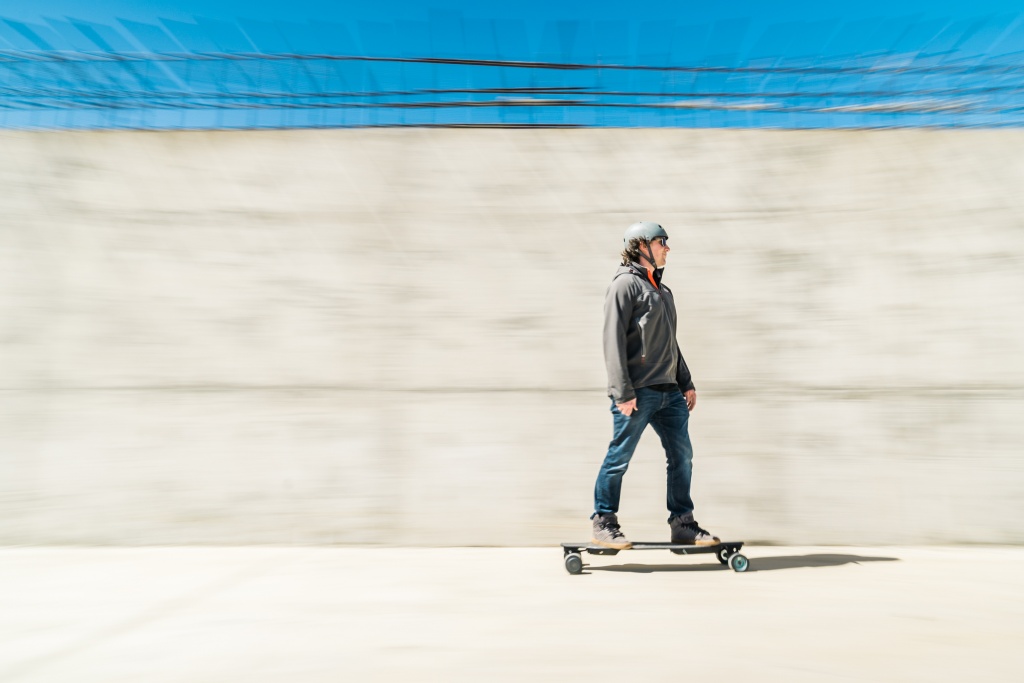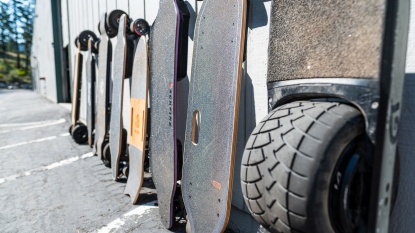Skatebolt Breeze II Review

Our Verdict
Our Analysis and Test Results
One unique feature that this skateboard has is cruise control, making it easy to maintain a constant speed for longer trips and maximize your battery life.
Speed
We test for top speed and maximum acceleration. The Skatebolt Breeze II delivered some impeccable results in this pair of tests, earning it one of the better scores of the bunch.
The Breeze II had an average top speed of 20.73 mph in our tests. In our acceleration tests, it took this board an average of 4.26 seconds to complete the course, which was one of the fastest in the group.
Range
When range testing, we maintained a speed of around 12 miles per hour, and on a full charge, the Breeze II made it 12 miles before dying. However, it slowed down considerably for the last 0.2 miles, so we would label the effective range in our test at around 11.8 miles.
It took just shy of 3.5 hours for this board to completely recharge, which is quite a bit longer than the claimed 2 hours by the manufacturer.
Ride
Our judges rated the Breeze II as decently comfortable to stand on, as the deck has a good amount of flex and a noticeable amount of camber. It wasn't our preferred board for longer trips, but we didn't dread spending time on it — provided the pavement is smooth.
The Breeze II is not much of a breeze to ride if the pavement is full of cracks. We found this board tends to stall if traveling with any amount of speed and takes a little bit of time to kick back on if you hit a crack, leading to a very jarring and unpleasant ride.
Hills
We had some mixed results with this skateboard. It climbed a 15% grade hill fairly easily with a fresh battery, but we found this performance drastically decreased with lower battery levels. After riding for around 2 miles or so, this board struggled to make it up any sort of hill, even as low as a 10% grade.
Build
The Breeze II is one of the heftier boards of the bunch, tipping the scales at just over 21 pounds — about 4 pounds heavier than the average.
The remote is decently comfortable to hold and intuitive to use, though the cutout for your finger can be a bit cramped if you have hands on the larger side. It feels a little cheap, but we like that it gives you both board and remote battery status and makes it easy to swap modes. We noticed a slight lag for the board's response, but nothing overly problematic.
Unfortunately, we struggled to get in touch with the customer service for this board and it was hard to find additional information about the warranty.
Braking
It took an average of 77' for the board to come to a complete stop from 12 mph, and 35' for the board to slow down enough to that we felt comfortable hopping off.
This board didn't do much better at managing speed on hills, continuing to accelerate even with full brakes applied on a 15% hill.
Value
Overall, we don't think this skateboard is a great bargain buy, as it pairs an overall so-so score with a price tag that is typically higher than average.
Conclusion
The Skatebolt Breeze II is worth checking out if you are searching for an exceptionally speedy board, but its otherwise middling performance makes it hard to recommend for most people.


